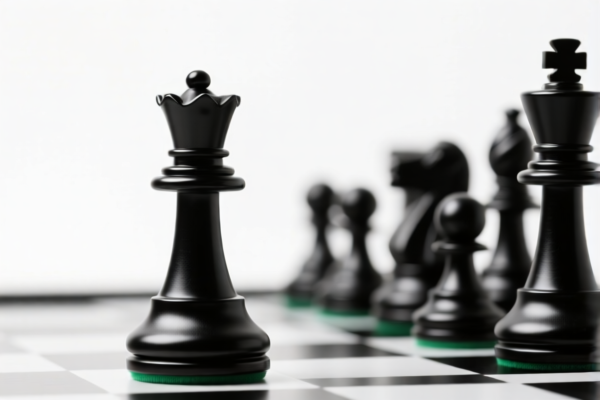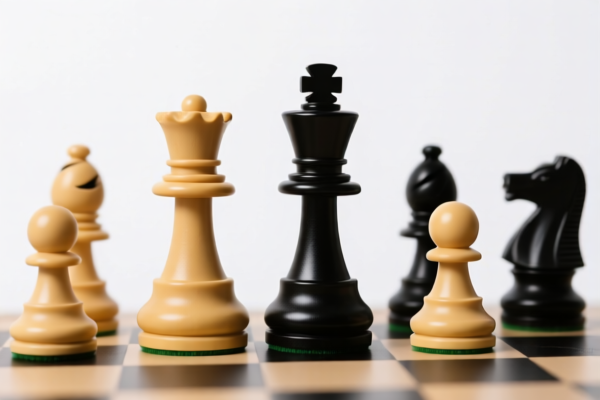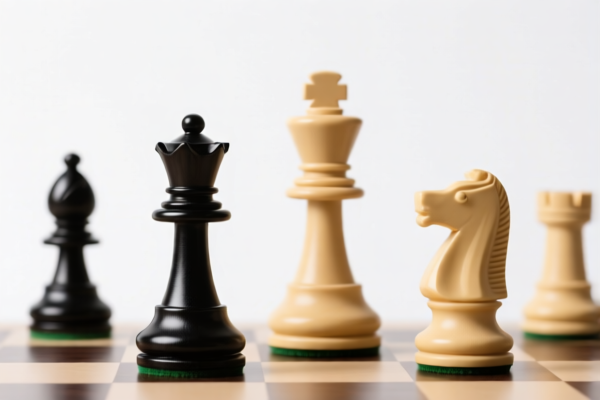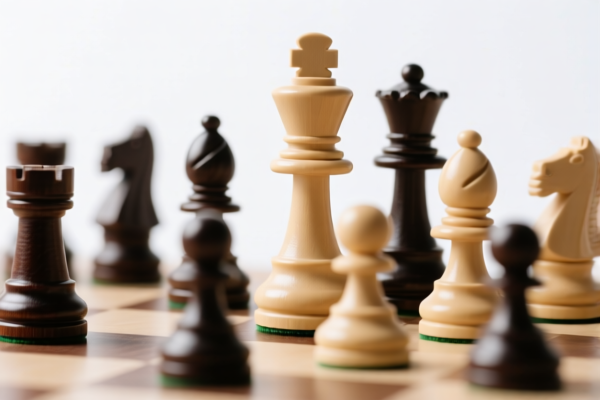| HS Code | Official Doc | Tariff Rate | Origin | Destination | Effective Date |
|---|---|---|---|---|---|
| 9504906000 | Doc | 30.0% | CN | US | 2025-05-12 |
| 9503000090 | Doc | 30.0% | CN | US | 2025-05-12 |
| 9503000073 | Doc | 30.0% | CN | US | 2025-05-12 |
| 3924104000 | Doc | 33.4% | CN | US | 2025-05-12 |
| 3924905650 | Doc | 40.9% | CN | US | 2025-05-12 |
| 4911914040 | Doc | 37.5% | CN | US | 2025-05-12 |
| 4911998000 | Doc | 37.5% | CN | US | 2025-05-12 |
| 9504500000 | Doc | 30.0% | CN | US | 2025-05-12 |
| 4906000000 | Doc | 37.5% | CN | US | 2025-05-12 |
| 9701990000 | Doc | 37.5% | CN | US | 2025-05-12 |




International Chess
International chess, commonly known as chess, is a two-player strategy board game played on a checkered board with 64 squares arranged in an eight-by-eight grid. It is widely regarded as a complex and intellectually stimulating pastime, recognized as a sport and a significant element of culture.
Material:
- Chessboard: Traditionally made of wood (often light and dark alternating squares, typically 8x8). Modern boards can be made of various materials like plastic, glass, or metal. Square size is standardized for tournament play.
- Pieces: A set consists of 32 pieces: 16 of one color (typically white or light) and 16 of another color (typically black or dark). The pieces are differentiated by their shape and function. Common materials include wood (e.g., boxwood, ebony), plastic, or metal. Standardized piece designs (Staunton pattern) are used in formal competitions.
- Timer: Used in timed games to regulate each player’s moves. Digital timers are standard in tournaments.
Purpose:
The primary goal of chess is to checkmate the opponent’s king. Checkmate occurs when the king is under immediate attack (in “check”) and there is no possible move to remove it from attack – no escape, no blocking piece, and no capture of the attacking piece.
Function:
Chess is a game of perfect information, meaning both players have complete knowledge of the game state at all times. The game involves:
- Strategic Planning: Developing long-term plans to control the board, develop pieces, and create attacking opportunities.
- Tactical Calculation: Analyzing immediate sequences of moves to gain material advantages, deliver checks, or force favorable exchanges.
- Pattern Recognition: Identifying common motifs and strategic ideas.
- Positional Understanding: Evaluating the strengths and weaknesses of a position.
Usage Scenarios:
- Recreational Play: Played casually between friends, family, or opponents of similar skill level.
- Competitive Tournaments: Organized events with official rules and rating systems (e.g., FIDE – Fédération Internationale des Échecs).
- Online Chess: Played remotely via various platforms and websites.
- Educational Tool: Used to develop critical thinking, problem-solving skills, and concentration.
- Cultural Significance: A historically and culturally important game with a rich tradition of masters and famous games.
Common Types/Variations:
- Standard Chess (FIDE Chess): The most common form, governed by FIDE rules.
- Rapid Chess: Games with a shorter time control than standard chess (typically 10-60 minutes per player).
- Blitz Chess: Very fast games (typically 3-5 minutes per player).
- Bullet Chess: Extremely fast games (typically 1-2 minutes per player).
- Chess960 (Fischer Random Chess): The initial position of the pieces (excluding pawns) is randomized, creating a new challenge for players.
- Correspondence Chess: Played over a long period of time, often via mail or online, allowing players ample time to analyze moves.
- Bughouse Chess (Crazyhouse): A four-player variant played with captured pieces that can be re-introduced to the board by the capturing player.
International chess falls under several potential classifications based on the provided information. Here's a breakdown of relevant HS codes:
- 9504906000: This code covers “Video game consoles and machines, table or parlor games, including pinball machines, billiards, special tables for casino games and automatic bowling equipment, amusement machines operated by coins, banknotes, bank cards, tokens or by any other means of payment: Other: Other: Chess, checkers, parchisi, backgammon, darts and other games played on boards of a special design, all the foregoing games and parts there of (including their boards); mah-jong and dominoes; any of the foregoing games in combination with each other, or with other games, packaged together as a unit in immediate containers of a type used in retail sales; poker chips and dice”. This is a direct match for chess sets. The total tax rate is 30.0%, with a base tariff of 0.0%, no additional tariff, and an additional tariff of 30.0% after April 2, 2025.
- 9504500000: This code covers “Game sets, other than those of heading 9503, including chess sets”. This is a broader classification that specifically includes chess sets. The total tax rate is 30.0%, with a base tariff of 0.0%, no additional tariff, and an additional tariff of 30.0% after April 2, 2025.
- 4906000000: This code covers “Plans and drawings for architectural, engineering, industrial, commercial, topographical or similar purposes, being originals drawn by hand; handwritten texts; photographic reproductions on sensitized paper and carbon copies of the foregoing (if the chess set includes detailed instructions or diagrams as originals drawn by hand or photographic reproductions)”. This applies if the chess set is accompanied by original hand-drawn plans, instructions, or photographic reproductions of these. The total tax rate is 37.5%, with a base tariff of 0.0%, an additional tariff of 7.5%, and an additional tariff of 30.0% after April 2, 2025.
Important Considerations:
- If the chess set includes detailed instructions or diagrams as originals drawn by hand or photographic reproductions, HS code 4906000000 may also be applicable.
- Regarding HS code 9504906000 and 9504500000, please note the additional tariff of 30.0% will be applied after April 2, 2025.
Customer Reviews
No reviews yet.